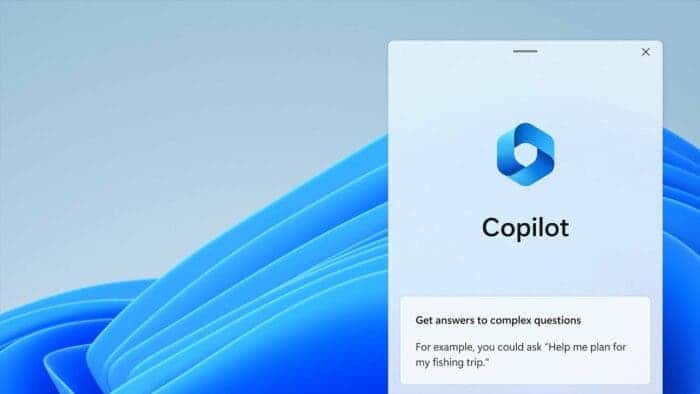In November last year, Microsoft released the Build 19045.3757 (KB5032278) update for Win10 users. The focus of this build is to introduce the Copilot AI (preview version) function. However, there are now reports that Windows Copilot promoted by Microsoft is not available for LTSC systems. This may be good news for Windows 10 LTSC 2021 users. The industry believes that one of the main reasons why Microsoft wants to decentralize Copilot to the Win10 system is that the current number of monthly active devices in Win10 exceeds 1 billion. However, the number of monthly active devices in Win11 is 400 million. Microsoft doesn’t want to miss out on these 1 billion potential users, so decentralizing Copilot is a natural thing.

What are LTSC systems?
The Long-Term Servicing Channel (LTSC) is a licensing option for Windows 10 and Microsoft Office. It is designed for specialized devices, such as those that control medical equipment or point-of-sale systems. They typically perform a single important task and need to have functional software for a long time. LTSC systems receive regular security updates, but no feature updates. For example, Windows 10 Enterprise LTSC (Long-Term Servicing Channel) is a long-term support version of Windows 10 Enterprise released every 2 to 3 years. It receives only security updates and has a full 10-year support lifecycle.
Similarly, Office LTSC 2021 is the most recent on-premises version of Microsoft’s productivity software that’s available to organizations through a volume licensing agreement. It is available for enterprise admins to download and deploy to the users in their organization. It is specifically designed for organizations running regulated devices where feature updates can’t be installed for years at a time. The system also works for devices without internet connections, as well as speciality systems that require a long-term servicing channel.
Why is Copilot not available for Win10 LTSC systems
LTSC systems are designed for specialized devices such as those that control medical equipment or point-of-sale systems. Such special systems are already designed for a straightforward job. They do not need the suggestions of CoPilot which is an AI tool. The services that CoPilot offers are not needed for such specialized devices that are for specific jobs.

In a Microsoft community blog post, the company stated why Windows 10 and 11 users should try CoPilot. The company said
Why you should try Copilot in Windows
Employees process a variety of information every day, and generative AI can help them discover and create new content.
Employees may have used generative AI before by accessing Microsoft Copilot (formerly known as Bing Chat) or ChatGPT through a browser, and Copilot on Windows systems can provide users with a more localized and better AI experience support.
As an IT professional, you not only help your organization stay at the forefront of AI, but you also protect employees from exposing company data when using AI models.
With Copilot in Windows, you can deliver a managed version of Copilot to Windows 10 and Windows 11 devices so employees don’t accidentally expose confidential or proprietary information.
By using Copilot, employees can:
Save time and effort by typing prompts in natural language or using your voice to prompt information and services in one place.
Explore new possibilities and ideas by generating creative and innovative content including text and images.
One of the reasons for trying out CoPilot is to help create new content. Well, specialized devices that use LTSC systems do not need to create new content. They are designed for a job and it is that job they will do. Microsoft knows this and it is probably why the company is not releasing Copilot for Win10 LTSC systems.
Conclusion
In conclusion, Microsoft’s decision not to make Copilot available for Windows 10 Long-Term Servicing Channel (LTSC) systems reflects a nuanced understanding of the diverse needs of its user base. LTSC systems, tailored for specialized devices like medical equipment and point-of-sale systems, prioritize stability and reliability over feature enhancements. Thus, the absence of Copilot on LTSC systems is not perceived as a limitation but rather as a strategic alignment with the intended functionality of these specialized devices.
The introduction of Copilot, Microsoft’s generative AI tool, to Windows 10 and 11 systems underscores the company’s commitment to leveraging AI to enhance user productivity and creativity. By providing users with the capability to generate content efficiently and explore new possibilities, Copilot aims to streamline workflows and foster innovation in everyday tasks.
While Windows users are encouraged to explore the benefits of Copilot for creating new content and improving productivity, the exclusion of LTSC systems acknowledges the unique requirements of these specialized environments. By focusing on mainstream Windows versions with broader user bases, Microsoft ensures that Copilot’s features are effectively deployed where they can add the most value, while also maintaining compatibility with the diverse ecosystem of Windows devices.





